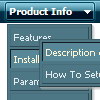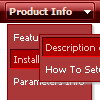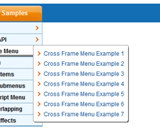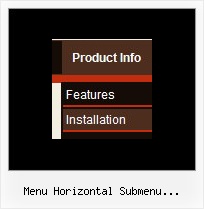Recent Questions
Q: How do I change the font style for menus to bold, but leave the sub-menus normal in the html navigation bar?
I understandthere’s a “fontStyle” variable, but is there an “itemfontStyle”?
A: You can use Individual Item styles to set specific parameters for eachitem or submenu.
var fontStyle=["normal 9pt Verdana","normal 9pt Verdana"]; //for subitems
//style for the top items:
var itemStyles = [
["itemHeight=21px","itemBackColor=#F2F3F2,#1665CB","fontStyle='bold 9pt Verdana','bold 9pt Verdana'"],
];
Q: I have looked and looked but I cannot figure out for the life of me how to make the Icon ontop and the words on the bottom of java menu items, The class A and Class C words need to be at the bottom of the pictures if possible.
A: You can paste any html code within java menu items.
For example:
["<img src='image.gif'> <br>Class A ","","","",""]
Q: I installed the trail version before I want to buy it. It looks wonderfull, but I was unable to make menu items inside a PHP file.
Do you have an example(tutorial) how to at deluxe menu inside a php file ?
A: Unfortunately, we don't have such example.
You can create your menu using PHP, for example:
<?php echo " ["|Bibliografia - ksiazki","home_bibliografia_dol.php","","","",,,],"; ?>
<?php echo " ["|Bibliografia - artykuly","home_bibliografia_dol1.php","","","",,,],"; ?>
<?php echo " ["|Bibliografia - linki","home_bibliografia_dol2.php","","","",,,],"; ?>
Please, see the following link too
http://deluxe-menu.com/generate-menu-from-database-xml-php-asp-vb-support.html
Q: Your product seems to have menus draw only in a fixed 'hardcoded' direction ( opens either left or right )
is it possible to customize so that it is "self-aware" of the client browser window size...
"if there's room draw to the right, if not, open the menu to the left..."
A: You can see your submenus in any case.
They won't drop down out of the browser window.
Please, check it.
More info about the ways of showing submenus you can find here:
http://deluxe-menu.com/ways-showing-submenus-sample.html

 Features
Features









